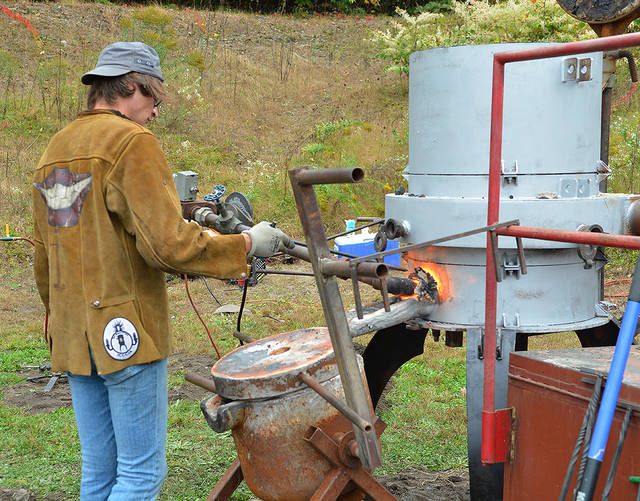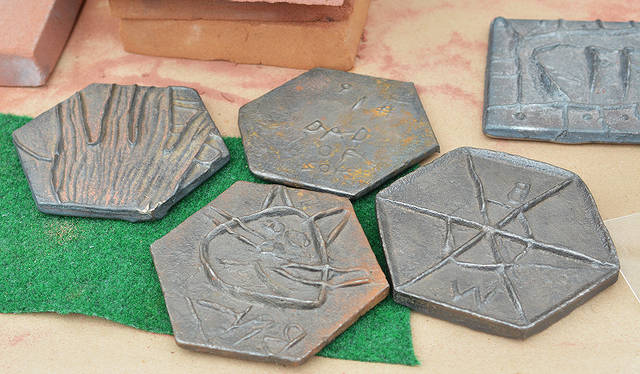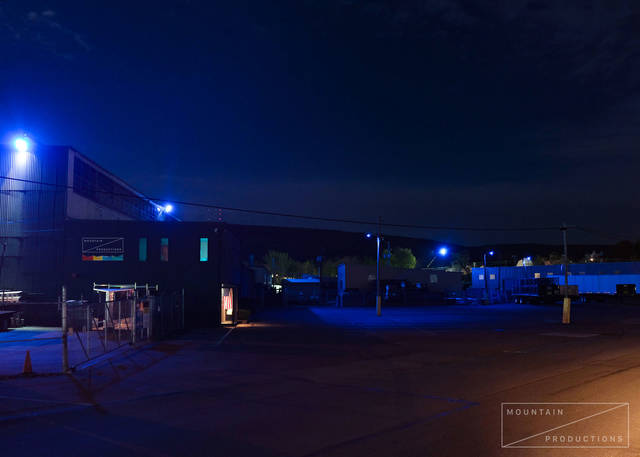PITTSTON — The Keystone Iron Works held an iron pour at the rear of the Pittston Memorial Library on Oct. 12 where, for $5, anyone could purchase a scratch block and design an iron tile for keepsake.
Judy Greenwald, president of the Pittston Arts Council, said it was the first time the iron pour took place in the city.
“This (iron pour) has been done for the last 10 years in Scranton and they were moving it out of Scranton so we were going to try it here to see how it goes,” Greenwald said. “We didn’t know what to expect because it’s our first time trying it so we were hoping for a bigger crowd. There were a lot of people excited about the project.”
Cloudy skies, chilly temperatures and a threat of rain may have kept attendance numbers down.
The library parking lot was converted to an iron pour facility, complete with a high temperature furnace capable of melting down scrap iron that was poured in molds.
Area craft vendors, food vendors and live music were on site for the 10 a.m. to 6 p.m. event, including Susquehanna Brewing Co., Avenue Diner and Arcaros.
“The thing is, this isn’t a fundraiser,” Greenwald said. “We are giving back to the community for supporting the arts council. We wanted to do something that not just buy a piece of sculpture and stick it here. We wanted to involve the community in some kind of a project where they could get something out of it and interact with art and artists.”
Kay Dartt, of West Virginia, and a nine-year member of Keystone Iron Works, drove over three hours to attend the iron pour.
“The entire process is called metal casting,” Dartt said. “This practice has been done for thousands of years. The iron casting community is very wide reaching and there are a lot of iron pours throughout the country. It takes a lot of people to do an iron pour.”
An estimated 20 volunteers took part in the pour in Pittston.
An employee of Shepherd University, Dartt said once a scratch block is designed, molten iron can be poured into the mold. Once poured, most tiles could be quenched in an hour. The final process is where the iron tile gets sanded down, becoming free from burrs and shape edges.








